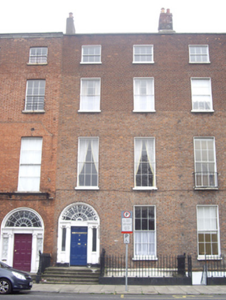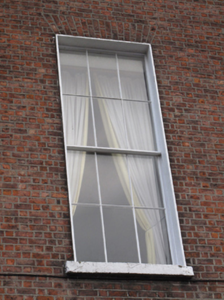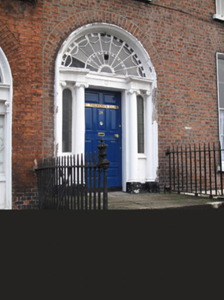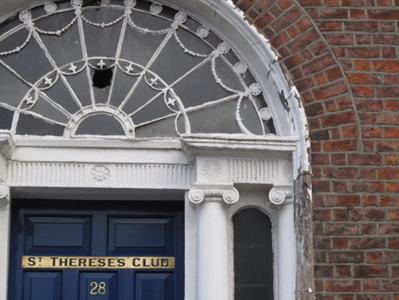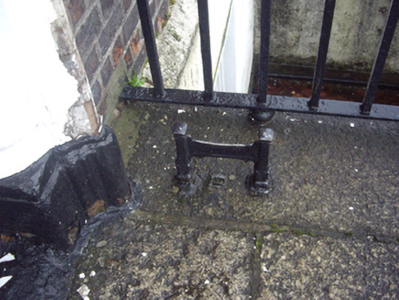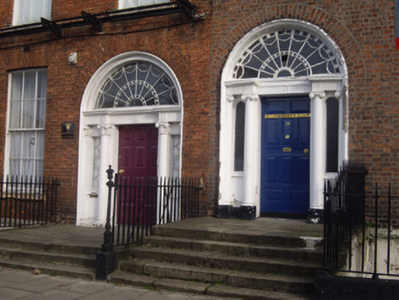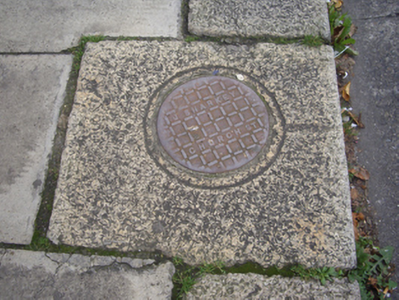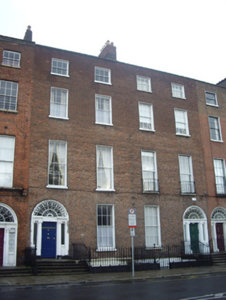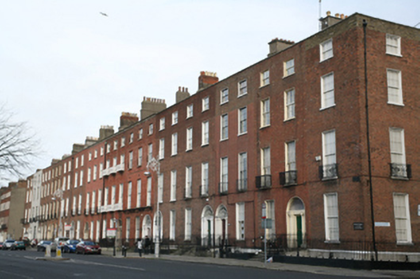Survey Data
Reg No
50011042
Rating
Regional
Categories of Special Interest
Architectural, Artistic
Original Use
House
In Use As
Building misc
Date
1800 - 1810
Coordinates
316159, 235465
Date Recorded
16/11/2011
Date Updated
--/--/--
Description
Terraced two-bay four-storey house over exposed basement, built, c.1805, as one of group of four identical houses. Now in institutional use. Double-pile slate roof, hipped to south of front pile and hipped to rear. Roof hidden behind parapet wall with granite coping and stepped brick chimneystacks to south party wall having clay pots. Red brick walls laid in Flemish bond, rebuilt to top two floors in machine-made brown brick. Chamfered granite plinth course above painted ruled-and-lined rendered basement walls. Cement rendered walls to rear elevation. Gauged brick flat-arched window openings with patent rendered reveals, painted granite sills and replacement timber sliding sash windows throughout, eight-over-eight pane to basement, six-over-six pane to ground to second floors and three-over-three pane to top floor. Rear has tripartite window to first floor, eight-over-eight pane to second floor and three-over-three pane to top floor, with six-over-six pane sqaure and round-headed windows to stairs bay. Gauged brick round-headed door opening with projecting stone reveal and painted stone Ionic doorcase. Replacement timber panelled door flanked by engaged Ionic columns on plinth blocks, plain arched sidelights and quarter engaged responding Ionic columns supporting fluted and stepped lintel cornice and original cobweb fanlight. Door opens onto granite platform with cast-iron bootscraper and five granite steps bridging basement (at higher level than adjacent platform). Platform and basement enclosed by original wrought-iron railings and cast-iron corner posts set on moulded granite plinth wall to street. Two cast-iron coal-hole covers set into granite kerbs. Single-storey structure to rear with rubble stone wall enclosing rear garden to lane having blocked up entrance.
Appraisal
Mountjoy Square was built on lands formerly belonging to Saint Mary’s Abbey, laid out in 1790 by Luke Gardiner II and complete by 1818. No. 29 is one of a group of two pairs of houses built later than those adjoining to the north. A well presented house which retains much original material including a fine doorcase identical to the paired house to the north. The four houses have higher platforms and doorcases than the rest of the terrace, a rare instance of departing from the overall plan. The retention of timber sash windows and of the stone and ironwork to the entrance and basement area contributes to the architectural and visual quality of the building and its setting. The interior contains simple joinery and plasterwork, similar to the six houses at the north end of the terrace, developed by the stuccodore Charles Thorpe and forms an essential part of the overall square.

